The Festival of Timket
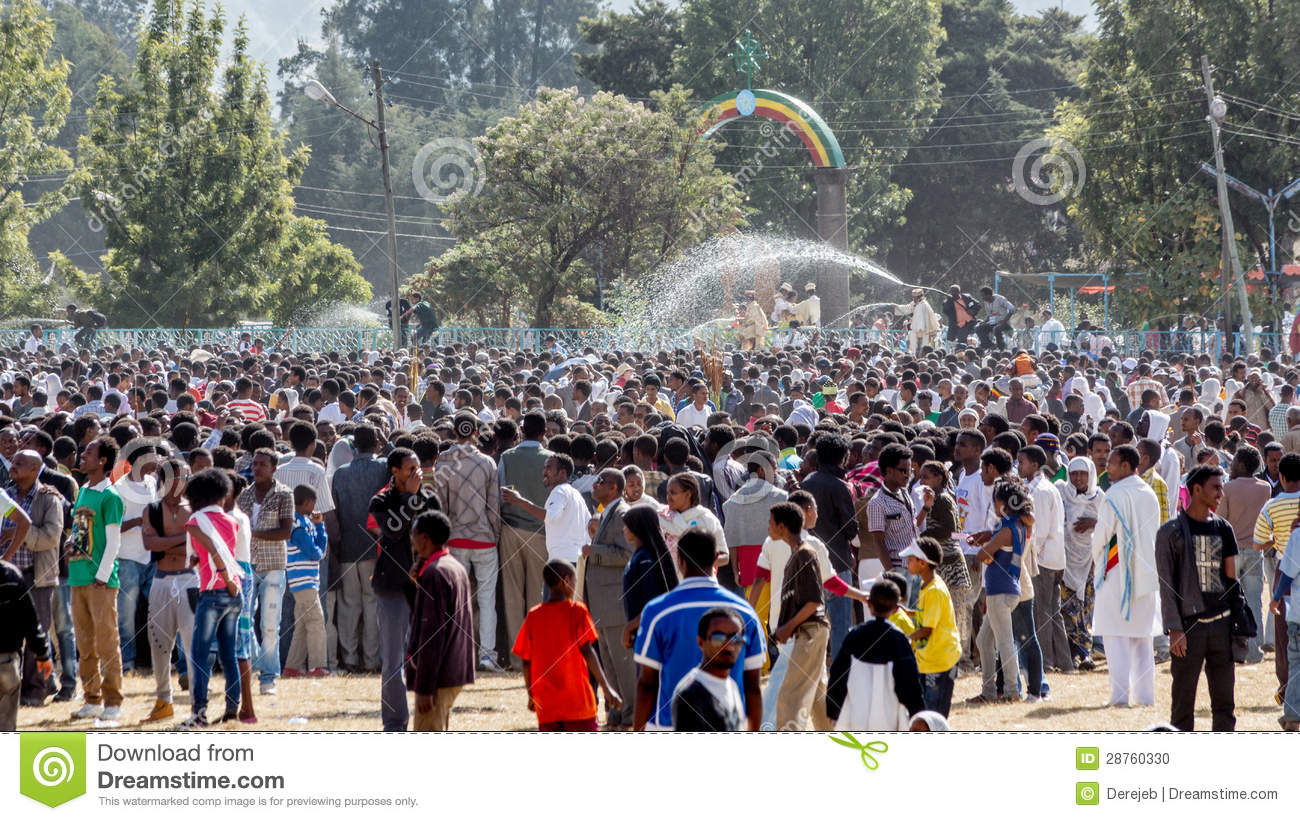
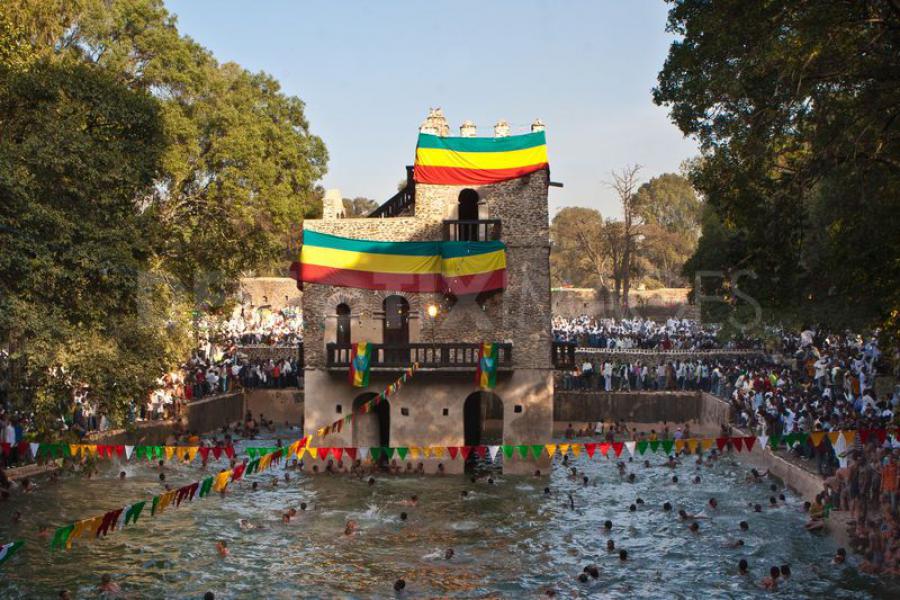
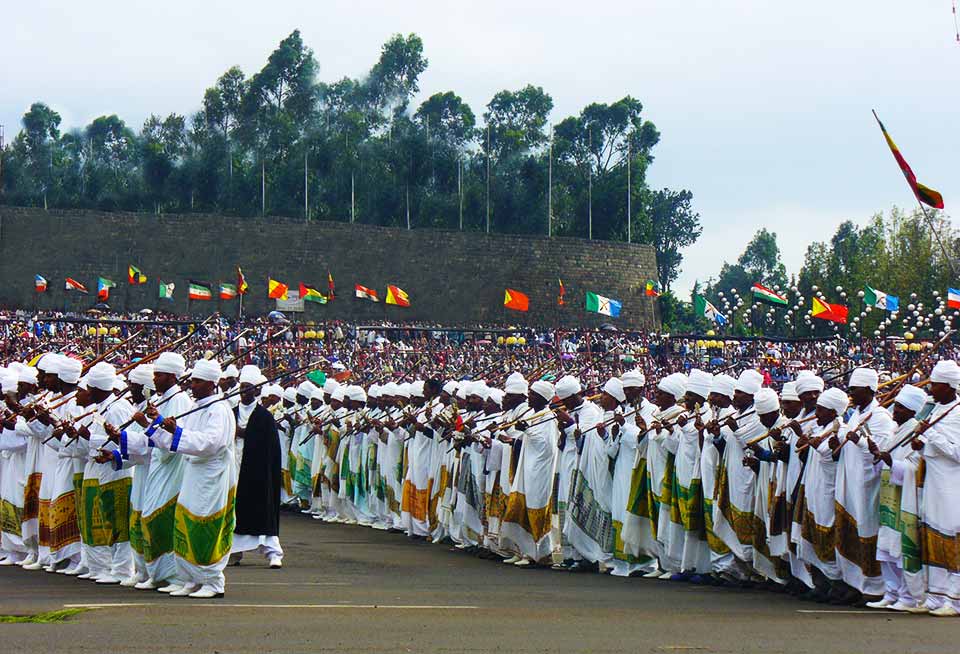
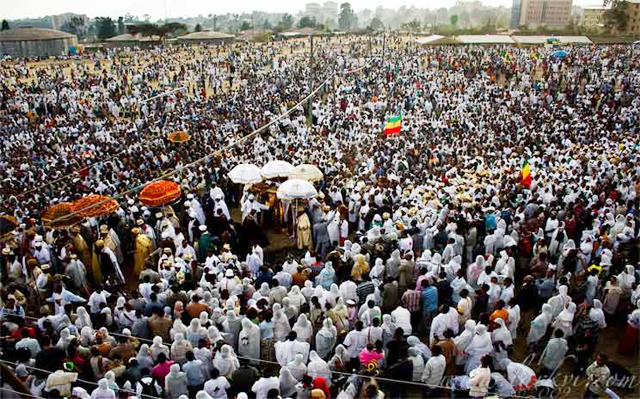




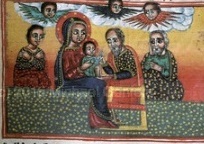
Jesus was circumcised eight days after His birth in keeping with the Old Testament law which holds that males should be circumcised eight days after birth on which they are also given their names. (Luke 2:21)
In the Old Testament, circumcision was a sign of the covenant made between God and Abraham’s offspring of promise. It represented a symbol which set apart those who believed in God from those who didn’t. (Leviticus 12:3) Isaac, the only son of Abraham chosen by God to be the heir of the covenant, was circumcised on the eighth day according to God’s order. From that time circumcision became a most important rite during the Old Testament.
In the New Testament, circumcision has been replaced by baptism which came to symbolize entry into the new covenant and becoming an heir to God’s eternal promises. Our Lord Jesus Christ was taken to the temple eight days after His birth because He came to accomplish the law of prophets and Torahs. (Mathew 5:17, Luke 2:21) He was named Jesus, the name the angel had given Him before He had been conceived.
According to a tradition in the Ethiopian church, when the man who carried out circumcisions approached Jesus, his knife almost melted down and so he was afraid. Then Jesus opened His mouth and said, “My blood shall not be shed on earth except on [Good] Friday”. Later Jesus was found circumcised Divinely.
Source:
• Ethiopic Synaxarium,on January 14.
• Hiruy Ermias 2006E.C, Mezgebe Tarik part 2, pp.141.
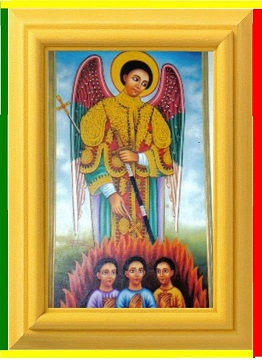 According to his homily, St Gabriel is one of the archangels who strongly contended for the honor and wisdom of God when the fraud angle wished to be the highest in heaven, even above God. During that time of mystification, St. Gabriel heartened his fellow angles saying, "we shall persist till we realize our Creator”.
According to his homily, St Gabriel is one of the archangels who strongly contended for the honor and wisdom of God when the fraud angle wished to be the highest in heaven, even above God. During that time of mystification, St. Gabriel heartened his fellow angles saying, "we shall persist till we realize our Creator”. St Gabriel is also the angel who announced to Zacharias the priest that his sterile wife will give birth to a son who will be called John (Luke 1:13). He mentioned some prophecies about that son, which shows that angels are capable of knowing what will happen in the future as revealed to them by God. Gabriel is also the one who was sent to the Holy Virgin and said to her, "The Holy Spirit will come upon you, and the power of the Highest will overshadow you; therefore also, that Holy One who is to be born will be called the Son of God" (Luke 1:35).
Gabriel also clarifies visions when ordered by God. This appears in the vision of the prophet Daniel. When Daniel was perplexed with the vision, the Lord sent Gabriel to clarify the meaning of the vision to Daniel. (Dan. 8:16) In the subsequent chapter, the angel said, “O Daniel, I now come forth to give you skill and understanding.” (Dan.9: 22)
December 17, 2016
‘Sebket’ is a Ge’ez word meaning ‘preaching, proclamation, (but in this context it is better to be defined as prophetic announcement)’. The week covers the period from Tahisas 7 – 13 (December16-22). During the period, the Ethiopian Orthodox Tewahido church recounts the words of prophets about the incarnation of God.
The prophets foretold the incarnation of the Word (Son of GOD), one of the persons of Holy Trinity, symbolizing Him and His Mother through different imagery which are revealed to them by God.
Every year, the Ethiopian church recognizes the clear prophetic statements that foretold the Coming of Jesus Christ for the salvation of mankind. It celebrates as one of the minor feasts of Our Lord Jesus Christ in three consecutive weeks known as “Sibket (prophetic announcement), Berhan (light) and Nolawi (shepherd)” prior to Christmas. The church celebrates the feasts by drawing scriptural readings relevant to the specific declaration of the prophets, how it was to be accomplished, and what it means for mankind.
Scriptures proved from prophecies of the Old Testament that Jesus Christ is indeed the promised Messiah and Savior, prophetically validating Him as the coming King of kings and Lord of lords! Some of the prophetic evidences and symbols recorded in scriptures read during this period are listed below: (Heb. 1: 1-14; 2 Pet. 3:1-9; Acts 3:17-26; Ps. 144:7-8; Jn. 1:44-51).

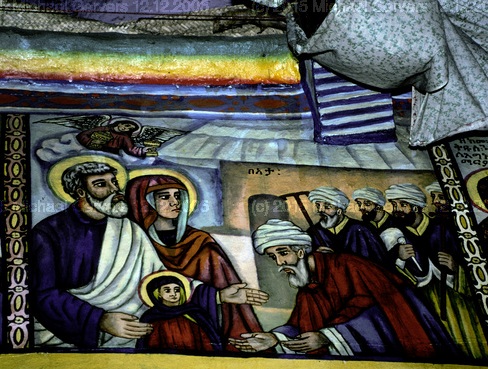
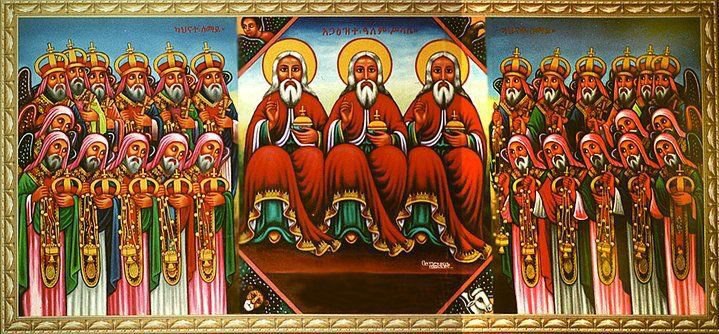 The twenty-four Priests of heaven are a class of priestly angels positioned in the fifth rank of angelic hierarchy and perform priestly duties without rest. (Rev. 4:4, 10, 11) They have been cleansing, praying and seek mercy for mankind as they had cleansed Isaiah with live coal from the altar. (Isa. 6:1-7).
The twenty-four Priests of heaven are a class of priestly angels positioned in the fifth rank of angelic hierarchy and perform priestly duties without rest. (Rev. 4:4, 10, 11) They have been cleansing, praying and seek mercy for mankind as they had cleansed Isaiah with live coal from the altar. (Isa. 6:1-7).
They are also called Seraphim from the Hebrew word ‘seraph’ or ‘seraphim’ (plural) – meaning ‘burners’. They fly around the Throne of God crying "Holy, Holy, Holy” and are six-winged angles; with two wings they cover their faces, with another two they cover their feet, and the last two they use to fly. (Isa. 6:2-3)
The Ethiopian Orthodox Tewaido church has been built churches dedicated to them and celebrates their feast each year on Hidar 24 (December 3).
The Ethiopic Synaxarium records the description of the Twenty four Priests of Heaven as follows:
In the Name of the Father, the Son, and the Holy Spirit One God, Amen.
On this day is commemorated the festival of the Twenty Four Priests of heaven, who are round about the throne of God, who are priests indeed, and who are beings of the spirit and have no bodies. They are exalted above all the saints and the spiritual hosts.
They are saints with God and they make intercession on behalf of the race of men, and they bring unto Him the prayers of the saints like incense in the censers in their hands. Alms and oblations cannot ascend to God except through them even as Saint John the evangelist says in the Vision of the Apocalypse, “I saw the place of Twenty Four elders round about Him, and they were sitting on twenty four thrones; and on their heads were twenty four crowns, and in their hands were twenty four censers containing sweet-smelling incense, which is the prayers of the saints who dwell upon earth, and which they make to rise up before God, the Sustainer of the Universe.”
And he also says, “And I heard Four Beasts praising and saying, Holy, Holy, Holy, Lord [God] of Hosts, the heavens and the earth are filled full of the holiness of Thy glory”. And straightway the twenty four priests of heaven fell down with their faces to the ground, and they took off their crowns, and they said unto Him, Glory, and honor, and thanks are fitting for Thee. And when a command went forth from God they fell down again with their faces to the ground, saying, Glory, and power, and judgment, and righteousness belong to our God” (Rev. 4:4).
And because the father of the Church have found statements about these Twenty Four Priests of heaven in the Holy Scriptures, and have seen stories told of them by the Apostles and in their Canon, saying that they are nigh unto God, they have ordered and ruled, saying, “The name of him that celebrates their commemoration shall be revealed upon earth. And they shall entreat God on his behalf to forgive him all his sins.” Therefore, Church fathers tell the people to honor the festival of the commemoration of the Twenty Four Priests of heaven.
Salutation to you, O priests of the Law. Their intercession be with us and Glory be to our God forever. Amen
Source: Ethiopic Synaxarium – (Translation of Sir E. A. Wallis Budge on December 3).
November 29, 2016
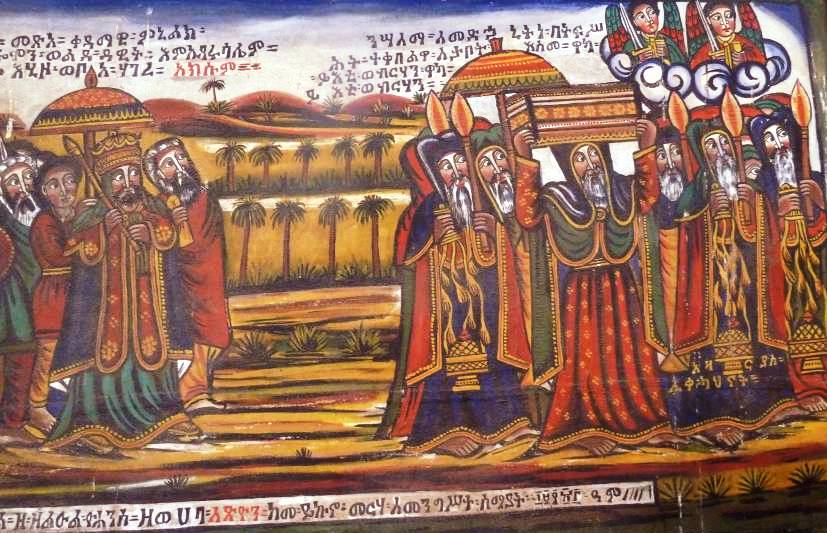
This is a feast colorfully celebrated every year on Hidar 21 (November 30) at every church dedicated to St. Mary. The day is observed with special fervor particularly in Axum Tsion where the Arc of the Covenant is housed safely. The occasion is attended by massive Christian pilgrimages from all over Ethiopia and also foreign visitors making it one of the most joyous annual pilgrimages in Axum, the sacred city of Ethiopians.

The Church of Our Lady Mary of Zion claims to contain the original Ark of the Covenant.The Feast of the Ark of the Covenant (locally known as Tabote Tsion) is held in commemoration of different historical events including the coming of the Ark of the Covenant to Ethiopia and the construction of the first church dedicated to St. Mary in Axum.
The day also marks the destruction of Dagon by the power of the ark of God, as recorded in the Bible, and the return of the Arc to Israel after seven months of exile at the Dagon’s house in Philistine. (1 Samuel 4; 6)
The Origin of the Ark of the Covenant
The Ark of the Covenant described as the original container for the Ten Commandments and the central symbol of God’s presence with the people of Israel. Its names convey the holy sense of God’s presence. The Hebrew word for ark means simply “box, chest, coffin,” as is indicated by its use for the coffin of Joseph (Genesis 50:26) and for the Temple collection box of King Joash (2 Kings 12:9-10).
The word “covenant” in the name defines the ark from its original purpose as a container for the stone tablets upon which the Ten Commandments (sometimes called the “testimony”) were inscribed. Sometimes it is identified with many names but most ornately known by “the Ark of the covenant of the Lord of hosts Who is enthroned on the cherubim” (1 Samuel 4:4).
The origin of the Ark goes back to Moses at Sinai. It was planned during Moses’ first sojourn on Sinai and built after all the tabernacle specifications had been communicated and completed. (Holman Bible Dictionary 1991),
After the exodus of the Israelites from Egypt, God gave them the tablet of the Ten Commandments (Tabote Tsion) through Mosses in the mount of Sanai so they use it as a sacred instrument to worship God. The Ark was carried by the Israelites during their 40 years of journey to the land of hope. Whenever they camped, the Ark was placed in a special and sacred tent called the Tabernacle.
The Captivity of the Ark of God and the Death of Eli
In the course of time, during the reign of Elli, unusual events took place among Palestinians and Israelites. The story recounted in the 1st Book of Samuel goes as follows. The old priest Eli had two children (Hophni and Phinehas) who were behaving wickedly, taking for themselves all the prime cuts of meat from sacrifices and committing adultery with women who served at the sanctuary`s entrance.
Eli was aware of their behavior but he rebuked them too lightly and was unable to make them give up their bad deeds. He used to tell them, “my children what I heard of you is wrong; if a man does wrong to a man to God is prayed for, but how could you do wrong to God?” but he refrained from punishing them because they were his sons.
Eli’s sons kept on doing sinful acts, and so, Samuel the Prophets was sent to Eli to tell him that he and his family will be punished for their wrongdoing: “God has sworn unto the house of Eli, that the iniquity of Eli’s house shall not be purged with sacrifice nor offering forever …In that day I will perform against Eli all things which I have spoken concerning his house. When I begin, I will also make an end. For I have told him that I will judge his house for ever for the iniquity which he knoweth; because his sons made themselves vile, and he restrained them not.” (1 Samuel 3:12-14)
As a result, the Philistines attacked Israel. “And the Philistines put themselves in array against Israelites; and when they joined battle, Israel was smitten before the Philistines, and they slew of the army in the field about four thousand men eventually capturing the Ark of the Covenant from the Israelites and killing Eli’s sons, who accompanied the Ark to the battle as priests. (1 Samuel 4:2)
Israelites were always victorious in their battles whenever they had Tabote Tsion amidst them. But because God’s wrath was on them due to the sins of Eli’s sons, they lost the battle and many thousands died in the war filled. Tabote Tsion was captured in the battle and both of Eli’s sons were killed.
Eli, who was nearly blind, was unaware of the event until he asked about all the commotion. Sitting in a chair, he was told what had happened by a soldier who had fled the battle. The soldier said to Eli "I am one who has barely escaped from the war to tell you that the ark has been captured by our enemies and both of your sons died on the war"
Upon hearing the shocking news, Eli fell backwards out of his chair and died from a broken neck. He was a Judge of Israel for a total of 40 years, and died at the age of 98. His daughter-in-law, the wife of Phinehas, was pregnant and near the time of delivery. When she heard the news that the Ark of God had been captured and that her father-in-law and husband were dead. She went into labor and gave birth, but was overcome by labor pains. As she was dying, the women attending to her said "Don’t despair; you have given birth to a son." But she did not respond or pay any attention. She named the boy Ichabod, to mean The Glory has departed from Israel – because of the capture of the Ark of God and the deaths of her father-in-law and her husband.
After their victory at Ebenezer, the Philistines took Tabote Tsion to their country but misfortune fell on them. When in Ashdom, it was placed in the temple of Dagon under the idol. The next morning Dagon was found prostrate, bowing down before Tabote Tsion. They again restored the idol to its original place but yet again on the following morning Dagon was found broken into pieces.
The Philistines were also plagued by diseases and an outbreak of mice. They then sent Tabote Tsion to the land of Ashdon. But the same tragedy occurred among the people of Gath and Ekron to whom Tabote Tsion was moved. After the Ark had been among them for seven months, the Philistines, on the advice of their diviners, returned it to the Israelites, accompanying its return with an offering consisting of golden images of the tumors and mice with which they had been afflicted. The Ark was then set in the field of Joshua (1 Sam. 6:1-15).
Based on these miraculous events, the Ethiopian Church celebrates the feast of the Ark of the Covenant locally known as Tabote Tsion.
May the intercession and blessings of Saint Mary be up on us all!
Source:
• Holman Bible Dictionary, published by Broadman & Holman, 1991.
• "Sacred Sites of Ethiopia and the Arc of the Covenant". Sacredsites.com. Retrieved 2016-11-27.
November 24, 2016
Based on Fetha Negest (Article 15, Number 565), the Fast of the Prophets (Tsome Nebiyat) is one of the seven official fasting seasons ordained in the Ethiopian Orthodox Tewahido Church that starts on 15th Hedar (November 24) and ends on Christmas eve 28th of Tahsas (January 06). The Orthodox Church observes the Feast of the Nativity of Jesus Christ with 44 days of fast, which culminates in the feast.
It is called the Fast of the Prophets because the prophecy about the coming of Christ was fulfilled. Sometimes it is called Yelidet Tsome or Christmas Fast to commemorate the Birth of Christ.
Thanks to the grace bestowed upon them by the Lord, the Prophets foretold the coming of Christ, Salvation of mankind with His coming, the birth of Christ from the Virgin and yearned for the birth of Our Lord and they used different creatures to symbolize Christ. Nowadays, we fast it not by expecting the birth of Jesus Christ but to celebrate the gift we acquired consequent upon His Birth and to take part in the blessings of our forefathers, prophets and apostles.
The Church recognizes the necessity for her children to “chastise the body and bring it under subjection”, as St. Paul advises. The body is ever striving for mastery over the spirit. Besides the external sources of temptation, the world, we have always another source within us, which is a part of our nature. This is why mortification is necessary. Self-denial in lawful things enables us to turn with great earnestness to spiritual things.
It is on these grounds that the Ethiopian Church has strictly adhered to the injunctions of the Didascalia and practices faithfully the longest and most strict fasts in the world. More than 70 % of days of the year in the Ethiopian Church are strict fasting days for all members of the church above the age of 7.
Fasting is not only prayer and abstinence from eating meat, fat, eggs and dairy products. Nor is it just abstaining from eating for certain duration of time. When we fast we should also refrain from all wrongdoings, and evil deeds such as vanity, violence, jealousy, hatred, and all works of Satan. Rather, it is a time of deeper repentance and it should be done with the object of seeking to know God in a deeper prayer and experiencing spiritual contemplation.
We have to overcome our earthly desire and stay away from those who advise quoting, “… let us eat and drink; for tomorrow we die.” (1Cor 15:32) Because those who advise this push us away from the right path and separate us from God; they push us to sin and darkness, not to the light and righteousness. This is because from the very beginning man was created to live through the law, not through lawlessness.
Something that draws man to His Creator Jesus Christ is not food but fasting. We should rebuke our body by fasting and the like, show vigilance for prayer, perseverance in good deeds. More than ever, today we have to be obedient to God, to overcome the current tribulations in the world in general. We also need to pray for our private, public and Church problems to find solutions; for no earthly wisdom can solve these problems; except through fasting and prayer. We have to be persistent in our request and knock His door for Him to satisfy the good desires of our heart.
As the Word of God tells us, “But blessed are your eyes, for they see: and your ears, for they hear. For verily I say unto you, That many prophets and righteous men have desired to see those things which ye see, and have not seen them; and to hear those things which ye hear, and have not heard them.” (Matt 13: 16-17), our forefathers and the prophets did not witness the coming of Jesus Christ, but we, the generation of the New Testament have seen our Lord through the eyes of the Apostles.
Therefore, we have to understand and then appreciate this great grace we received but the prophets had not the opportunity to do so. When we fast their fast, we give our witness that Jesus Christ is our foundation and we follow in the footsteps of the prophets and apostles. It is not enough to know and speak about fasting; we have to live it and benefit from the fruits it brings forth.
Show of charity is also a Christian duty. Alms giving to the poor and the needy, and bringing to the church what is required of us is necessary. Without these Christian duties, fasting could not be complete.
May God who has received the fast and prayer of the Prophets and Apostles, receive our prayers and devotion.
Let it will be His will to start this fast and reach the graceful day of His Birth!!
Source:
• Holy Bible: The King James Version (1769).
Edition: Mesfin Zegeye
November 21, 2015
The Ethiopian Orthodox Tewahido Church celebrates the Feast of St. Michael on 12th day of each month of which two of them are great annual feasts of the saint – on Hidar 12 (November 21) and Senie 12 (June 19).
• Holy Bible: The King James Version (1769).
• Holman Bible Dictionary, (1991, pp.451-7).
November 16, 2017
Every year on Hidar 8 (November 17), the Ethiopian Orthodox Tewaido church celebrates the feast of the four beasts locally known as ‘Arba’ettu Ensisa’. Churches named after these heavenly creatures has been rarely built across the nation. They are four in number and take the form of a lion, an ox, a man and an eagle. They have six wings; are covered with eyes and continually praise God.

Acording to Ethiopian church tradition of iconography, the surroundings and inner door of sanctuaries ornamented by the icons of Cherubim along with the Images of Holy Trinity.
The Ethiopic Synaxarium records the description of the Four Living Creatures as follows:
In the name of the Father and the Son and the Holy Spirit, one God. Amen.
On this day is celebrated the festival of the Four Beasts, who have no bodies, and which are the Wheels of God that bear His Divine Throne. According to the testimony concerning them by John the evangelist in his vision says, “I saw a throne in heaven, and He Who sat thereon was brighter than the sun, and more brilliant then the lightning. And I saw in the midst four beasts, full of eyes; the first had the likeness of the face of a lion, the second had the likeness of the face of a bull, the third had the likeness of the face of a man, and the fourth had the likeness of the face of an eagle; and each of them had six wings. And they cried out by day and by night, saying, “Holy, Holy, Holy, God of Hosts. All the heavens and the earth are filled with the holiness of Thy glory” (Rev. iv, 6).
And Isaiah the prophet also said, “I saw the Lord of Hosts sitting upon a high throne, and the whole place was filled with His glory. Seraphim and Cherubim surrounded Him, and His awe and majesty were exceedingly great. Each of these had six wings; with two of their wings they covered their faces, with two of their wings they covered their feet, and with two of their wings they did fly in the greatest glory by day and by night, saying, Holy, Holy, Holy, Lord God of Hosts. All the heavens and the earth are filled with the holiness of Thy glory” (Isaiah vi, 2).
And David the prophet said, “He rode upon the Cherubim and did fly” (Psalm xviii, 10), and he also said, “He Who sitteth upon the Cherubim maketh the earth to quake,” And Ezekiel said concerning these wheels, “I saw a wind blow from heaven, and in it there was a cloud surrounded by fire, and brightness, and lightning, and four beasts supported Him. Each face (or person) had six wings, and they went before them. And the first beast had the likeness of the face of a man, and they ceased not to praise God by day and by night, and they said, Holy, Holy, Holy, Lord God of Hosts, all the heavens and the earth are filled with the holiness of Thy glory” (Ezekiel I).
And John the evangelist said, “I heard a voice saying, Hallelujah! Salvation and power and blessing to our God. And the four beasts and the four and twenty elders of heaven worshipped God, saying, Hallelujah! God the Sustainer of the universe is King (Rev. xix, 4). After this I heard a voice saying, Praise our God with harp and psalms, Hallelujah! And I heard the voice of a multitude of peoples like unto the thunder, saying, God, the Sustainer of the universe, is King.” And many of the Books of the Old and the New Testaments testify concerning the honor of these Four Beasts which God hath set near Him to make supplication on behalf of all creation.
He with the man’s form maketh supplication on behalf of the children of men, he with the lion’s form maketh supplication on behalf of the beasts, he with the bull’s form maketh supplication on behalf of the cattle, and he with the eagle’s form maketh supplication on behalf of the birds. Now these beasts are very much nearer God than all the other powers of heaven.
For this reason the fathers of the Church have instituted the commemoration of the heavenly creatures, and have built churches in their name in every place because they make supplication for the race of man.
Salutation to the Four Beasts and to the horses of the Cherubim!
Source: Ethiopic Synaxarium on Hidar 8 (November 17)
